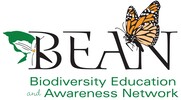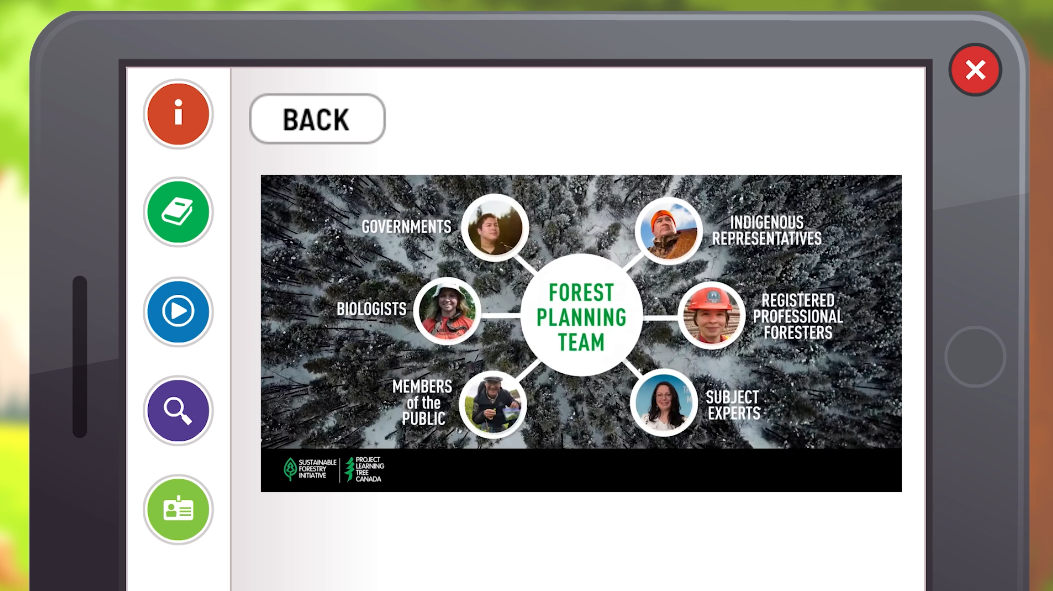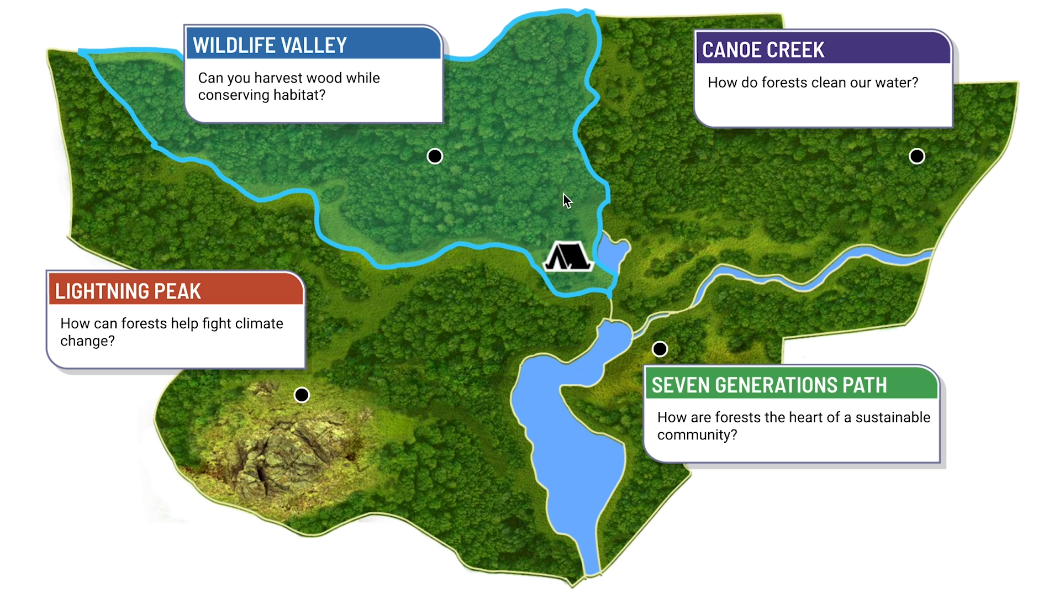|
By: Danika Strecko, Senior Education Manager, Project Learning Tree Canada The forest is teeming with life – from the tiniest microorganisms and fungi to birds and bears. The interdependence between everything growing and living in forests is truly awe-inspiring. And while one of the best ways to learn about nature is to get outside, we realize that’s not always possible. Perhaps you don’t have easy access to forests or the weather in your neck of the woods (pun intended) isn’t ideal this time of year. That’s why Project Learning Tree Canada developed a fun online learning experience, Forest Quest, for teens and young adults. Students explore the forest while learning about the biodiversity it supports, the impacts forests have on our communities and daily lives, and how to sustainably manage forests. They also learn about various career paths in the forest and conservation sector, ranging from wildlife biologist to wildland firefighter. Upon completion of their journey through the forest, students earn a digital badge showing they have learned forest fundamentals and improved their forest literacy. How does a sustainably managed forest support biodiversity? If you think about nature, when something is off balance, it often triggers a series of events. For instance, if you have too many predators and not enough prey, eventually the number of predators dwindles because of lack of food, or they move to a different territory that may have negative impacts on species living there. There has to be a balance. When developing forest management plans, it’s necessary to make decisions that ultimately support a broad range of diverse species, where there’s enough – but not too many – of any kind of animal, insect, or tree. In the biodiversity module of Forest Quest, learners get to try their hand at creating a sustainable forest management plan through an interactive map. Keeping biodiversity surveys and community impacts in mind, they must determine the amount of forest to conserve or harvest to benefit certain animal populations both now and into the future. A sustainable forest management plan takes into consideration many variables, but most importantly, it contributes to a balanced ecosystem. Inspiring youth to take action We all play an important role in improving biodiversity. Teaching youth about nature not only inspires the next generation of environmental stewards and professionals, but it fosters creativity and builds analytical, problem-solving, and critical thinking skills. With Forest Quest, students improve their forest literacy and learn about the power of forests – from combatting climate change to providing us with food and materials that we need to survive. Learning Together Although intended for young adults, Forest Quest is the perfect resource for formal and non-formal educators to brush up on forest literacy and forest management knowledge. It can also be used as a fun supplementary activity in the classroom where students can work, learn, and make decisions together as they journey through the forest.
0 Comments
Leave a Reply. |
AuthorWrite something about yourself. No need to be fancy, just an overview. Archives
July 2024
Categories |



 RSS Feed
RSS Feed
